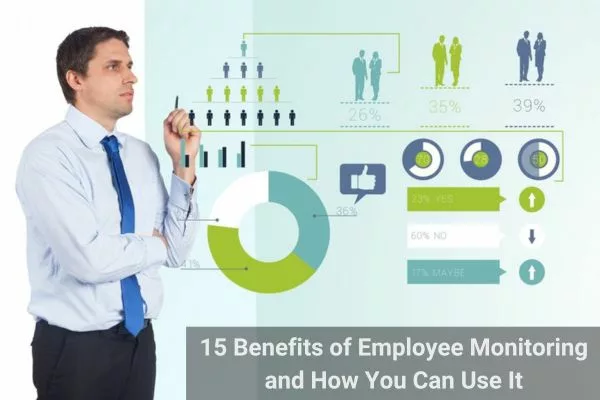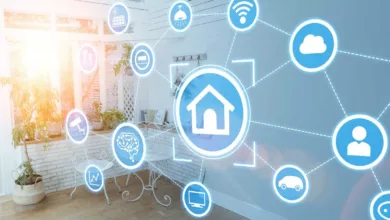15 Benefits of Employee Monitoring and How You Can Use It

Employee monitoring, as a debatable subject in the past, has become an essential technique that modern companies implement in order to achieve high performance and efficiency. However, such an idea may have been initially doubted by trust and privacy, when carried out carefully and transparently, monitoring employees can bring instead numerous advantages for both employers and employees.
15 Key Benefits of Employee Monitoring:
1. Enhanced Productivity:
Employee tracking makes it possible to pinpoint system or processes drawbacks and offer targeted solutions aimed at increasing work productivity.
2. Time Management Improvement:
The time tracking feature allows organizations to pinpoint the activities that suck the time and devise strategies for eliminating these time-wasting activities by enhancing the time management skills of all employees.
3. Resource Allocation Optimization:
Employee monitoring provides such insights to businesses to better allocate resources and ensure that resources used in the business are done so for the purpose of achieving business targets.
4. Performance Evaluation:
The real time monitoring and objective data that is collected enable fair and accurate evaluation for performance where constructive feedback can be given as well as improvement opportunities for employees.
5. Training Needs Identification:
This ability allows for a focused improvement in areas where training or support are the best solutions; hence, providing the workforce with a personalized development process.
6. Compliance Assurance:
By monitoring, companies can guarantee their policy compliance, adherence to the industry regulations, and legally acceptable practices, hence leaving them with minimal risks of violating the standards and subsequent drawbacks.
7. Security Enhancement:
Through the mechanism of employee monitoring the company can have a tool for detecting and mitigating important security threats like data leak or unauthorized access which are improving the company’s security posture.
8. Conflict Resolution:
Employers can use communications and interactions monitoring to point conflicts or problems out to employees in time thus creating a healthy and collaborative work culture.
9. Remote Work Management:
Now with the popularity of remote work, monitoring systems provide a means for supervisors to supervise scattered teams and hence keep employees accountable irrespective of location.
10. Customer Service Improvement:
Monitoring customer interactions enables companies to gauge service quality, determine where improvements are needed, and as a result improve customer satisfaction and loyalty.
11. Cost Reduction:
Employee monitoring can result in higher productivity when it enhances resource use and increases operating efficiency across the board, which in turn boosts the profitability of the business as a whole.
12. Risk Mitigation:
Actual monitoring enables the precipitation of operational hazards, which facilitates the assumption of measures to prevent crises or disruptions of businesses.
13. Promotion of Innovation:
Analyzing shows a way for better workflow patterns and employee behaviors, consequently facilitating the culture of innovation and continuous improvement within the company.
14. Transparent Communication:
The transparent implementation of such monitoring initiatives will foster or create open communication between management and the employees and thus, trust and accountability in the organization is encouraged.
15. Strategic Decision-Making:
Monitoring data provides the necessary information to leaders that enable them to make timely decisions in line with organizational objectives, which eventually results in successful business outcomes.
How We Can Use Employee Monitoring Software:
Employee monitoring is likely to include diverse sorts of execution that may change agreeing to the organization objectives and needs. Here’s a comprehensive guide on how employee monitoring can be utilized successfully:
1. Define Objectives:
The initial step is to define what it is exactly that we want to accomplish by mapping out the goals. Acknowledge the indicators which you intend to measure the performance to make an appropriate decision and at the same time, which you want to upgrade. They (both technical and non-technological) can feature the lower level of productivity, sloppy time management, failure to comply with the business policies, or safety reasons.
2. Choose the Right Software:
Pick the Employee Monitoring Software that can be adjusted with the character and parameters of your company. How do writers navigate between objectivity and subjectivity in non-fiction writing? Consider the attributes such as support, nowadays simplicity, upgrades to the present systems and expansion ability.
3. Communicate Transparently:
The transparency of execution activity is one of the crucial parts of the success of an implementation process. Discuss with workers the reasoning behind the monitoring system and the scope therein, emphasizing on how it contributes to the increase in productivity and achieving organizational objectives. Address an issue around visibility and reassure employees that monitoring will be done with ethical and moral considerations.
4. Set Clear Policies:
Indicate specific policies and monitoring with software as an example. Identify what exemplary behaviors and misbehavior consequences should be and present these as a way of life. It is essential to make sure that employees are well-informed about their rights and responsibilities when it comes to implementing the surveillance measures
5. Focus on Productivity:
Employ monitoring technologies so that you can evaluate how well your employees are doing. This way, you will be able to spot the area in which you can make the improvements. Keep track of particular performance metrics like task completion rates, time use on various activities and overall efficiency. Analyzing productivity data to determine the source of any recurrent patterns and trends and facilitate the implementation of measures to increase productivity.
6. Monitor Time Management:
Track the way employees spend their time during the working hours. Tracking of clock-in and clock-out times, breaks, and rest periods is also a necessary item on the list. Use this data for reducing time wasting activities and separate the strategies to increase the management skills of the whole organization.
7. Ensure Compliance:
Implement monitoring software for checking that employees stick to corporate policies, industry norms, and laws. Track and detect any policy violation, security breach, or non-compliance matter emerging by enumerating employee activities. Take a hands-on approach to resolve compliance problems that may develop and lower risks too.
8. Enhance Security:
Implement monitoring of employee behavior to intercept and eliminate the pursuance of information safety risks like data leaks, unauthorized access and malware attacks. Scan for attempts to access sensitive information and be on the lookout for any suspicious and abnormal behavior signals that might be a sign of a security threat.
9. Improve Communication:
Screening of employee communications, both inward and outward, such as emails, chats, and calls, to make sure that the right communication inside the organization was carried out. Identify any communication problems, misunderstandings or proliferating tensions and work to resolve them in a timely manner.
10. Provide Feedback and Support:
Use monitoring data to tell employees how to help them improve and support them. Write in the comments what your opinion of technology will make our lives easier and what challenges we will face. Such as, acknowledge and encourage outstanding employees, identify the imperfections, and provide more effective coaching and encouragement if required. Instead, treatment of underperformance as a developmental instrument rather than a disciplinary tool is appropriate.
Conclusion
Ultimately, when managed appropriately, employee monitoring can be a potent means to boost productivity, tighten security, and create an environment that encourages accountability and lasting improvement. The benefits of this can be seen in the fact that businesses can optimize their operations, mitigate risks and stay ahead of their competitors.











